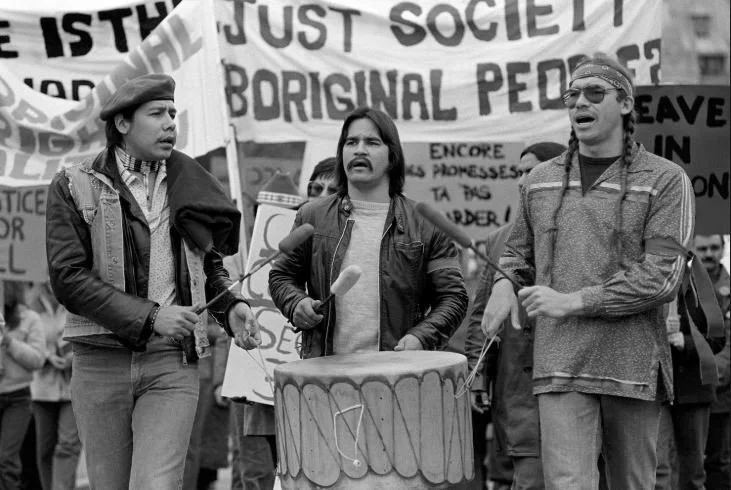A Brief History of The Indigenous Right to Vote
Voter suppression in Indian Country has been happening ever since American Indian people in the so-called US were granted the right to vote in 1924. American Indian suffrage is tied to the The Snyder Act of 1924, which granted American Indians “born in the US” full US citizenship, that extended to the protections to the right to vote.
Even with the passing of this citizenship bill, Indigenous Americans were still prevented from participating in elections because the Constitution left it up to the states to decide who had the right to vote. After the passage of the Snyder Act, it still took over forty years for all fifty states to allow Indigenous peoples to vote.
It wasn’t until 1948, that the Arizona Supreme Court struck down a provision of its state constitution that kept Indigenous peoples from voting. After that other states followed suit. However, even with the lawful right to vote in every state, Indigenous peoples suffered from the same strategies, such as poll taxes, literacy tests, and intimidation tactics, that kept African Americans from exercising that right. In 1965, with passage of the Voting Rights Act and subsequent legislation in 1970, 1975, and 1982, and now NAVRA, that many other voting protections were reaffirmed and strengthened.
The Library of Congress
96 years later, the Native vote showed up in force in the 2020 election
Statistics from registered voters on the Navajo Nation painted a surprising and hopeful picture for future voting habits in Indian Country. While the Navajo vote was powerful enough to turn the state of Arizona, (with 22 twenty-two tribal nations) blue in a presidential election, the first time since 1996, it was the COVID-19 pandemic (and the response of elected officials) that led many Diné to vote for Biden in 2020. In the 2020 Presidential election, the Navajo vote went overwhelmingly to Biden with some precincts reporting 60-90% support for Biden. Current issues like the looming Supreme Court decision on the Haaland vs. Brackeen case, this and other key issues like finite resource extraction, the climate crisis, and healthcare will continue to be at the fore of Native concerns.
Indigenous voters overcame years of voter suppression to do this. Mobilization on this scale is monumental and could not have happened without the strength of the community and outreach by numerous organizations.
However, it is ever more critical to stay aware of the ways voters are hindered at the polls or in the process of getting registered in the first place. Since the 2020 election tougher voter suppression policies have been enacted to curb Native participation in elections. According to the Brennan Center, even after the The Snyder Act of 1924, states still gave final word on who could vote in their elections, many states did not recognize Native American voters as they lived on Federal land, and they did not pay taxes.
What can we do?
While it is true we all have complex attitudes and beliefs in regards to voting and its impact on our lives. It is also true that politicians pay attention to Indian Country, and as we see more and more elected officials like Deb Haaland, Lynn Malerba, Sharice Davids, and Mary Peltoia, we can continue to show them support with our votes and we have to power to use our ballots to elect more Native Americans in positions of power.
If anything, this is a reminder to learn more about key issues we face in Indian Country. There are many ways to resist, voting is one of them but being aware is the first step.
Some Helpful resources:
https://www.indigenousvote.org/ (formerly Montana Native Vote, now Indigenous Vote)
https://vote.narf.org/ (Native American Voting Rights
https://canativevote.org/ (California Native Vote Project)





